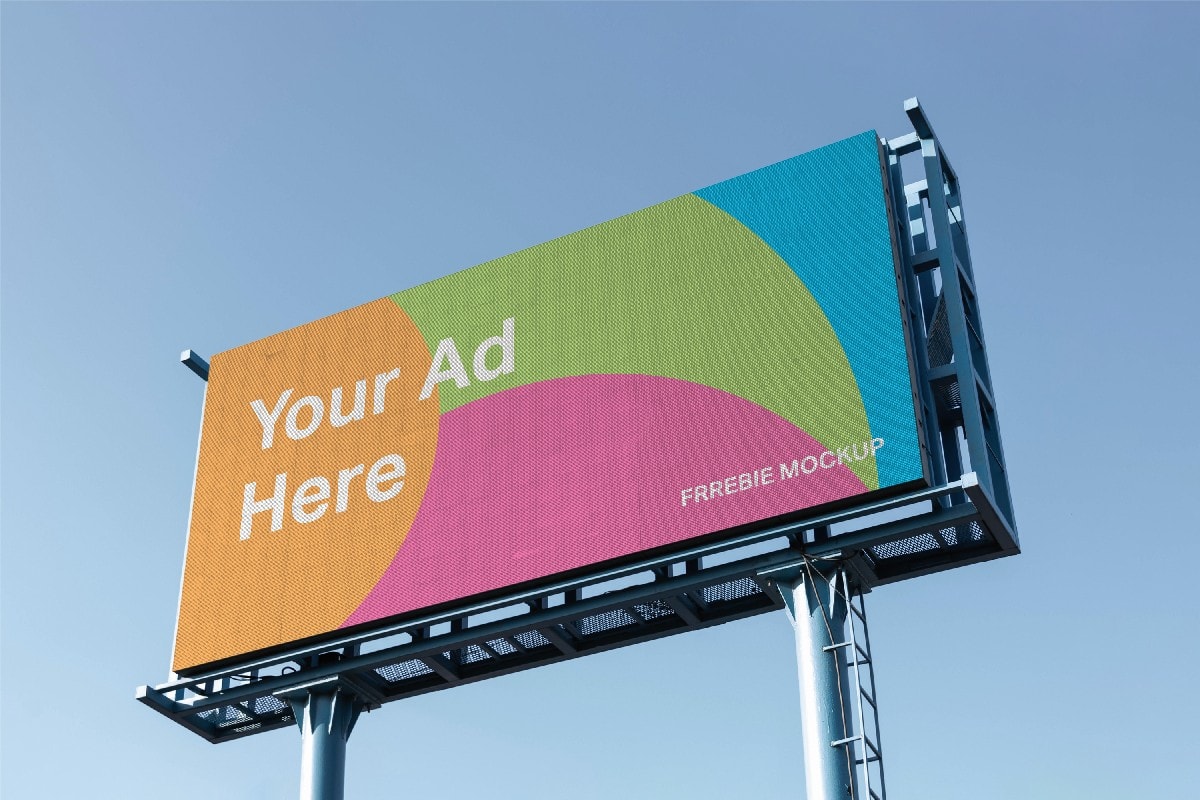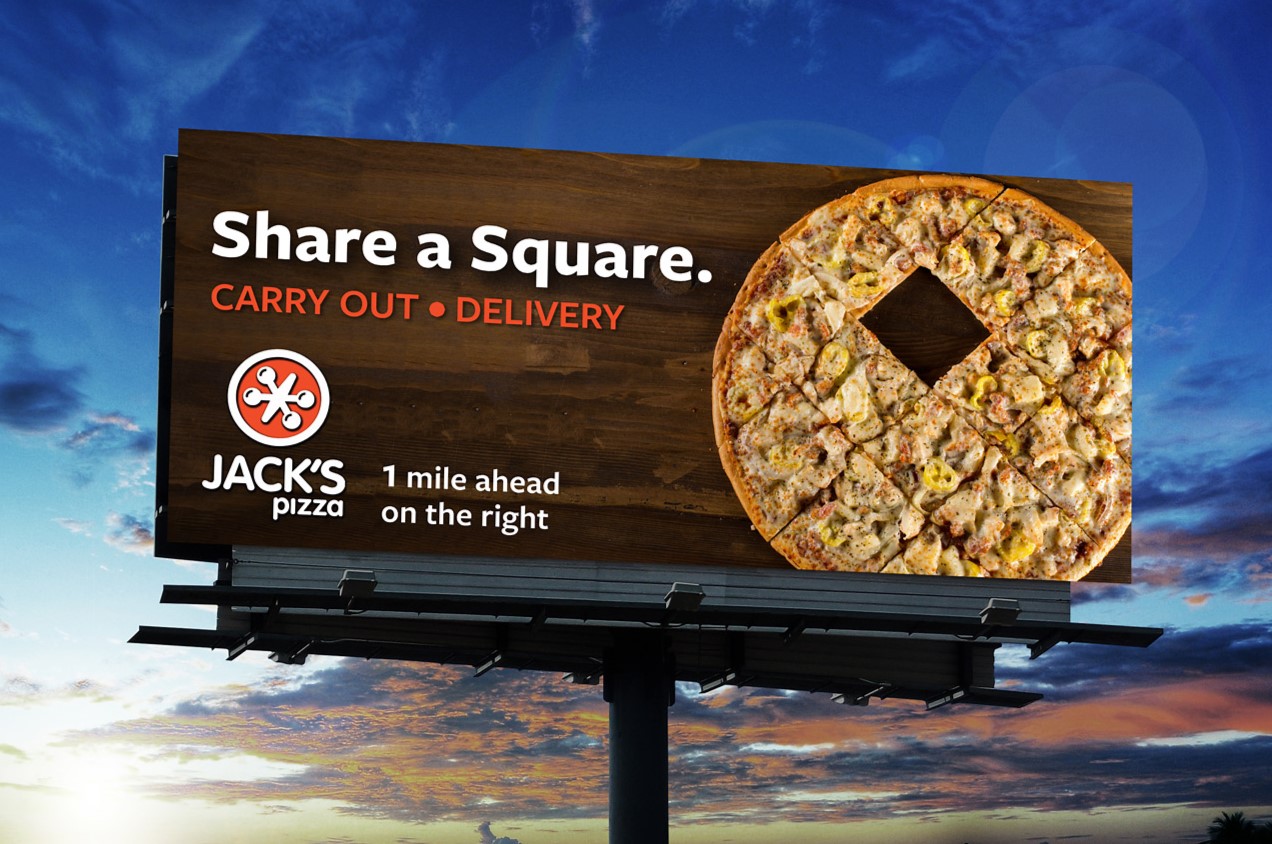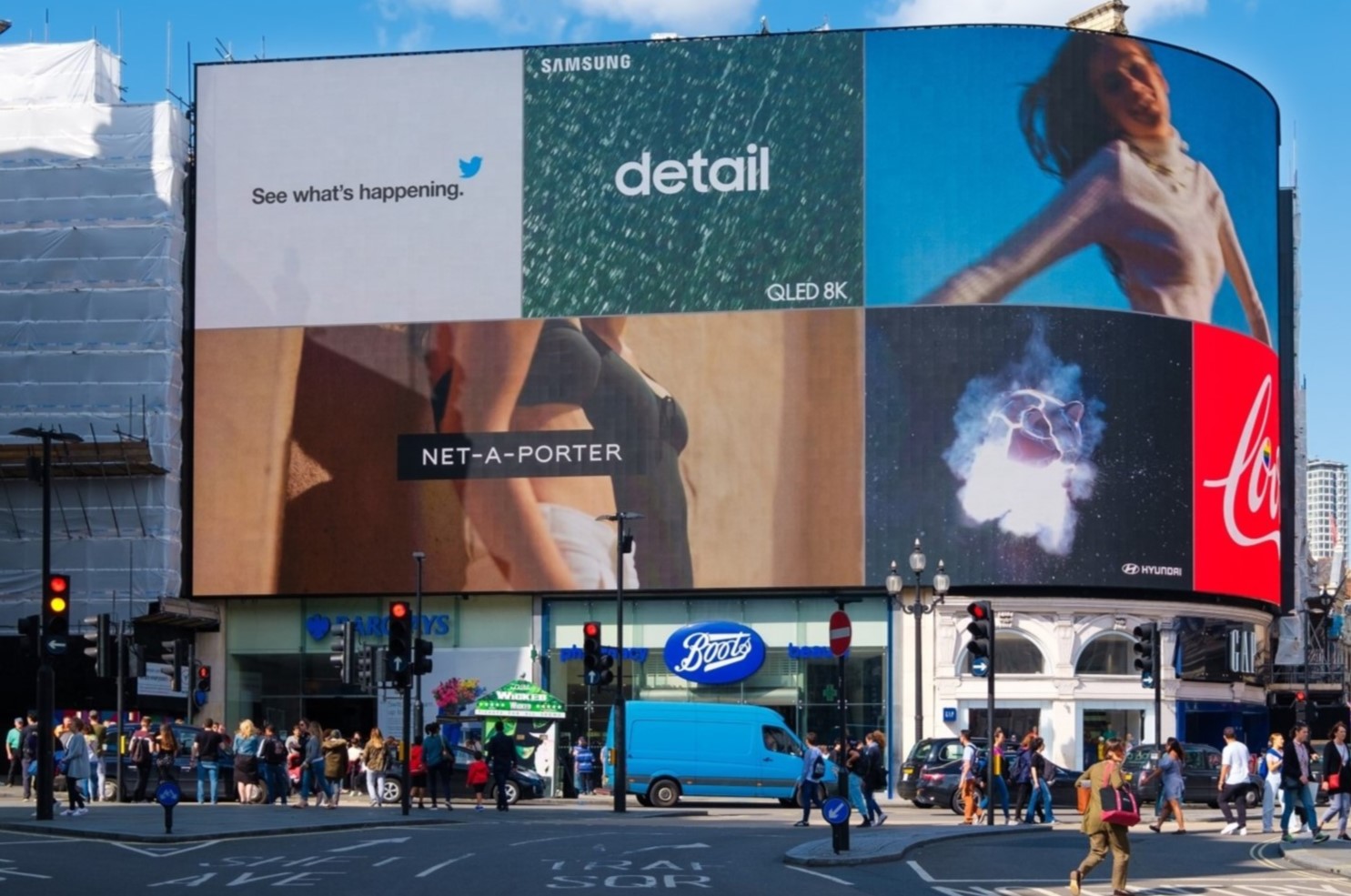Home>Furniture & Design>Outdoor Furniture>What Is Outdoor Advertising?


Outdoor Furniture
What Is Outdoor Advertising?
Published: January 16, 2024
Discover the impact of outdoor advertising and explore the latest trends in outdoor furniture, design, and decor. Learn how to enhance your outdoor space with our expert tips and ideas.
(Many of the links in this article redirect to a specific reviewed product. Your purchase of these products through affiliate links helps to generate commission for Storables.com, at no extra cost. Learn more)
**
Introduction
**
Outdoor advertising is a dynamic and impactful marketing strategy that has been captivating audiences for decades. This form of advertising leverages physical spaces in the outdoor environment to promote products, services, or brands. From towering billboards to eye-catching bus wraps, outdoor advertising offers a diverse range of formats to engage with potential customers in high-traffic areas. This article will delve into the various types of outdoor advertising, explore its advantages and disadvantages, showcase compelling examples, and ultimately provide a comprehensive understanding of this influential marketing medium.
Outdoor advertising holds a rich history, dating back to ancient civilizations where messages were displayed on stone tablets and town criers conveyed announcements in public spaces. Today, this age-old practice has evolved into a sophisticated and impactful marketing tool that seamlessly integrates with the modern urban landscape. With the ability to reach a broad and diverse audience, outdoor advertising continues to be a prominent fixture in the marketing strategies of businesses across the globe.
As we embark on this exploration of outdoor advertising, we will uncover the diverse formats and strategies employed in this dynamic field. Furthermore, we will uncover the advantages and disadvantages of this marketing approach, shedding light on its potential impact and limitations. To provide a comprehensive understanding, we will also showcase notable examples of outdoor advertising campaigns that have left an indelible mark on consumers. Through this journey, we will gain a deeper appreciation for the art and science of outdoor advertising and its enduring influence on consumer behavior and brand perception.
Key Takeaways:
- Outdoor advertising uses billboards, transit ads, and creative displays to reach diverse audiences in high-traffic areas, creating impactful brand presence and engaging consumers in the public sphere.
- While outdoor advertising offers broad reach and creativity, it also faces challenges such as limited message retention and high production costs, requiring savvy planning and execution for effective campaigns.
Read more: How To Use Outdoor Advertising
Types of Outdoor Advertising
Outdoor advertising encompasses a diverse array of formats, each designed to captivate and engage audiences in specific environments. Understanding the different types of outdoor advertising is crucial for businesses aiming to craft impactful and targeted marketing campaigns. Below are some of the most prevalent forms of outdoor advertising:
1. Billboards:
Billboards are one of the most iconic and prevalent forms of outdoor advertising. These large, eye-catching displays are strategically positioned along highways, urban centers, and high-traffic areas to maximize visibility. They come in various sizes, including bulletins, posters, and digital billboards, and are renowned for their ability to convey succinct yet compelling messages to a broad audience.
2. Transit Advertising:
Transit advertising encompasses ads displayed on public transportation vehicles, including buses, trains, and subways. These mobile displays offer unparalleled exposure to commuters and pedestrians in urban areas, effectively reaching individuals as they navigate through city streets and public transit systems.
3. Street Furniture Advertising:
Street furniture advertising utilizes public amenities such as bus shelters, benches, kiosks, and information displays as advertising platforms. By integrating advertisements into these functional urban fixtures, businesses can seamlessly embed their messaging into the fabric of the cityscape, effectively reaching pedestrians and commuters in high-traffic areas.
4. Guerrilla Advertising:
Guerrilla advertising employs unconventional and unexpected strategies to surprise and engage audiences in public spaces. This form of outdoor advertising often leverages creativity and innovation to deliver memorable and immersive brand experiences, transcending traditional advertising boundaries and leaving a lasting impression on viewers.
5. Digital Screens and Interactive Displays:
With the advent of digital technology, outdoor advertising has embraced dynamic digital screens and interactive displays. These modern platforms enable businesses to deliver dynamic, interactive, and visually captivating content to audiences in urban centers, shopping districts, and entertainment venues, fostering deeper engagement and brand recall.
6. Ambient Advertising:
Ambient advertising, also known as ambient media, integrates branded messages into everyday environments, leveraging unexpected locations and objects to capture the attention of passersby. This form of advertising often blurs the lines between traditional media and the surrounding environment, creating memorable and thought-provoking brand interactions.
These diverse forms of outdoor advertising offer businesses a rich tapestry of opportunities to connect with consumers in varied contexts and environments. By strategically leveraging these formats, businesses can amplify brand visibility, drive consumer engagement, and cultivate a compelling brand presence in the public sphere.
Advantages of Outdoor Advertising
Outdoor advertising offers a myriad of compelling advantages that make it a formidable component of an integrated marketing strategy. From its expansive reach to its ability to create lasting impressions, outdoor advertising presents a host of benefits for businesses seeking to elevate their brand presence. Below are some of the key advantages of outdoor advertising:
1. Broad Reach:
Outdoor advertising has the potential to reach a vast and diverse audience, spanning commuters, pedestrians, and individuals in urban, suburban, and rural settings. By strategically positioning advertisements in high-traffic areas, businesses can achieve unparalleled visibility and exposure, effectively engaging with consumers from all walks of life.
2. Continuous Exposure:
Unlike other forms of advertising that are fleeting or easily ignored, outdoor advertising offers continuous exposure to passersby. Whether it’s a towering billboard along a highway or an eye-catching bus wrap navigating city streets, these displays consistently capture the attention of individuals, reinforcing brand messaging and fostering top-of-mind awareness.
3. Impactful Brand Presence:
The large format and strategic placement of outdoor advertisements create a commanding and impactful brand presence in the public sphere. These displays have the power to captivate audiences, convey compelling messages, and leave a lasting impression, contributing to enhanced brand recall and recognition.
4. Local Targeting:
Outdoor advertising enables businesses to precisely target local audiences in specific geographic areas. Whether it’s promoting a neighborhood event, showcasing products in proximity to retail locations, or raising awareness within a community, outdoor advertising offers tailored and localized messaging opportunities.
5. Complementary to Digital Marketing:
In an increasingly digital world, outdoor advertising serves as a tangible and complementary extension of digital marketing efforts. By integrating outdoor advertising with digital campaigns, businesses can create a cohesive and multi-channel brand experience, reinforcing messaging across both physical and digital touchpoints.
6. Amplified Creativity:
The expansive canvas of outdoor advertising encourages boundless creativity, enabling businesses to craft visually stunning, thought-provoking, and immersive brand experiences. From interactive digital displays to guerrilla marketing activations, outdoor advertising empowers brands to unleash their creativity and captivate audiences in innovative ways.
These advantages underscore the enduring appeal and effectiveness of outdoor advertising as a potent tool for brand promotion and consumer engagement. By harnessing the unique strengths of outdoor advertising, businesses can fortify their market presence, foster meaningful connections with consumers, and propel their brands to new heights of visibility and impact.
Outdoor advertising is a form of marketing that reaches consumers when they are outside of their homes. It includes billboards, transit ads, and more. When creating outdoor ads, make sure they are eye-catching and easy to understand at a glance.
Disadvantages of Outdoor Advertising
While outdoor advertising boasts numerous strengths, it also presents certain limitations and challenges that businesses must consider when crafting their marketing strategies. Understanding the disadvantages of outdoor advertising is crucial for devising comprehensive and effective campaigns. Below are some of the key disadvantages associated with outdoor advertising:
1. Limited Message Retention:
Outdoor advertisements, particularly those encountered while commuting, offer limited time for message retention. Unlike print or digital media, where consumers can revisit content at their leisure, outdoor ads are often fleeting, making it challenging to convey complex or detailed messages effectively.
2. Weather and Environmental Factors:
Outdoor advertisements are exposed to the elements, making them susceptible to weather-related damage and deterioration. Harsh conditions such as rain, wind, and extreme temperatures can impact the visibility and longevity of outdoor ads, potentially diminishing their effectiveness over time.
3. High Production and Placement Costs:
Creating and placing outdoor advertisements, especially large-scale formats like billboards, can incur substantial production and placement costs. From design and printing expenses to securing prime locations, the financial investment required for outdoor advertising can be a deterrent for businesses with limited marketing budgets.
4. Limited Targeting Precision:
While outdoor advertising can reach a broad audience, its targeting precision is inherently limited compared to digital advertising. Businesses seeking highly specific demographic or behavioral targeting may find outdoor advertising less effective in delivering tailored messages to niche consumer segments.
5. Clutter and Competition:
High-traffic areas often feature an abundance of outdoor advertising, leading to visual clutter and fierce competition for consumer attention. In such environments, it can be challenging for individual ads to stand out and resonate with audiences amidst the sea of competing messages.
6. Regulatory Restrictions:
Outdoor advertising is subject to local regulations and zoning ordinances, which may impose restrictions on the size, placement, and content of ads. Navigating these regulatory frameworks can pose logistical and compliance challenges for businesses seeking to execute outdoor advertising campaigns.
7. Limited Interactivity:
Traditional outdoor advertising formats offer limited interactivity compared to digital and experiential marketing channels. This can constrain the depth of consumer engagement and interaction, limiting the potential for immediate and direct response from audiences.
By acknowledging these disadvantages, businesses can make informed decisions about integrating outdoor advertising into their marketing mix. While these challenges exist, savvy planning and creative execution can mitigate these drawbacks, allowing outdoor advertising to effectively complement broader marketing initiatives and contribute to a robust brand presence in the public domain.
Examples of Outdoor Advertising
Outdoor advertising has given rise to countless iconic campaigns that have captivated audiences, sparked conversations, and left an indelible mark on the public consciousness. These examples showcase the diverse creativity and impact of outdoor advertising, demonstrating its ability to transcend traditional marketing boundaries and forge meaningful connections with consumers. Below are some compelling examples of outdoor advertising campaigns that have made a lasting impression:
1. Coca-Cola’s Times Square Billboard:
The Coca-Cola billboard in New York City’s Times Square stands as an enduring symbol of outdoor advertising prowess. With its vibrant colors, dynamic displays, and seasonal themes, this iconic billboard has become a beloved fixture in the bustling urban landscape, delighting tourists and locals alike with its captivating messaging and visual spectacle.
2. Apple’s iPod Silhouette Campaign:
Apple’s innovative outdoor advertising campaign for the iPod featured striking silhouettes of individuals dancing against colorful backgrounds. This visually arresting display not only showcased the product’s sleek design but also conveyed a sense of energy and liberation, effectively capturing the essence of the iPod’s transformative impact on music consumption.
3. The Economist’s Witty Billboards:
The Economist’s thought-provoking and often humorous billboard ads have garnered widespread acclaim for their clever wordplay and compelling messaging. By leveraging succinct yet impactful statements, these ads have sparked intellectual curiosity and positioned the publication as a beacon of insightful commentary and analysis.
4. Nike’s Monumental Athlete Endorsements:
Nike’s larger-than-life outdoor ads featuring iconic athletes such as Michael Jordan and Serena Williams have transcended traditional advertising to become cultural landmarks. These powerful displays not only celebrate athletic excellence but also embody the spirit of determination, inspiration, and triumph, resonating deeply with audiences worldwide.
5. The ALS Association’s Ice Bucket Challenge:
While not a traditional billboard or display, the ALS Association’s viral Ice Bucket Challenge effectively utilized outdoor spaces as the backdrop for a global social movement. Participants filmed themselves taking the challenge outdoors, leveraging the power of public spaces to amplify awareness and engagement, ultimately raising millions for ALS research.
6. McDonald’s Creative Bus Shelter Ads:
McDonald’s has consistently delivered innovative and playful outdoor advertising, including bus shelter ads that cleverly showcased the fast-food giant’s iconic menu items. These interactive and visually engaging displays transformed mundane bus stops into immersive brand experiences, effectively capturing the attention of commuters and pedestrians.
These examples exemplify the diverse and impactful nature of outdoor advertising, showcasing the ability of well-executed campaigns to transcend mere promotion and become cultural phenomena. By harnessing creativity, strategic placement, and compelling messaging, outdoor advertising has the power to resonate deeply with audiences, shape public discourse, and elevate brands to new heights of visibility and influence.
Read more: Why Is Outdoor Advertising Effective
Conclusion
Outdoor advertising stands as a dynamic and influential force in the ever-evolving landscape of marketing and brand communication. From the towering billboards that adorn city skylines to the creative guerrilla campaigns that surprise and delight, outdoor advertising continues to captivate audiences, spark conversations, and leave lasting impressions on consumers worldwide. As we conclude our exploration of outdoor advertising, it becomes evident that this multifaceted medium offers a wealth of opportunities and challenges for businesses seeking to amplify their brand presence and engage with diverse audiences.
Throughout history, outdoor advertising has evolved in tandem with societal changes, technological advancements, and shifts in consumer behavior. Today, it seamlessly integrates traditional formats with cutting-edge digital displays and interactive experiences, creating a rich tapestry of opportunities for brands to connect with consumers in both urban and rural environments. The enduring appeal of outdoor advertising lies in its ability to command attention, convey compelling messages, and reinforce brand identities in the public sphere.
As businesses navigate the complexities of the modern marketing landscape, outdoor advertising remains a formidable tool for achieving broad reach, impactful brand presence, and localized engagement. While it presents challenges such as limited message retention and regulatory considerations, savvy marketers can leverage its strengths to create memorable and resonant campaigns that transcend traditional marketing boundaries.
From the iconic billboards that have become cultural landmarks to the innovative guerrilla activations that surprise and delight, outdoor advertising continues to push the boundaries of creativity and consumer engagement. By embracing its advantages, mitigating its limitations, and harnessing the power of strategic placement and compelling messaging, businesses can harness the full potential of outdoor advertising to fortify their market presence and forge meaningful connections with consumers.
As we look to the future, outdoor advertising is poised to continue its evolution, embracing new technologies, sustainability initiatives, and immersive experiences that resonate with today’s discerning audiences. By staying attuned to consumer trends, technological innovations, and the ever-changing urban landscape, outdoor advertising will remain a vital and captivating component of the marketing mix, shaping brand narratives and leaving an enduring imprint on the public consciousness.
In conclusion, outdoor advertising stands as a testament to the enduring power of creativity, innovation, and strategic communication in the public domain. Its ability to captivate, inspire, and provoke thought underscores its significance as a driving force in the realm of marketing, ensuring its continued relevance and impact in the years to come.
Frequently Asked Questions about What Is Outdoor Advertising?
Was this page helpful?
At Storables.com, we guarantee accurate and reliable information. Our content, validated by Expert Board Contributors, is crafted following stringent Editorial Policies. We're committed to providing you with well-researched, expert-backed insights for all your informational needs.















0 thoughts on “What Is Outdoor Advertising?”